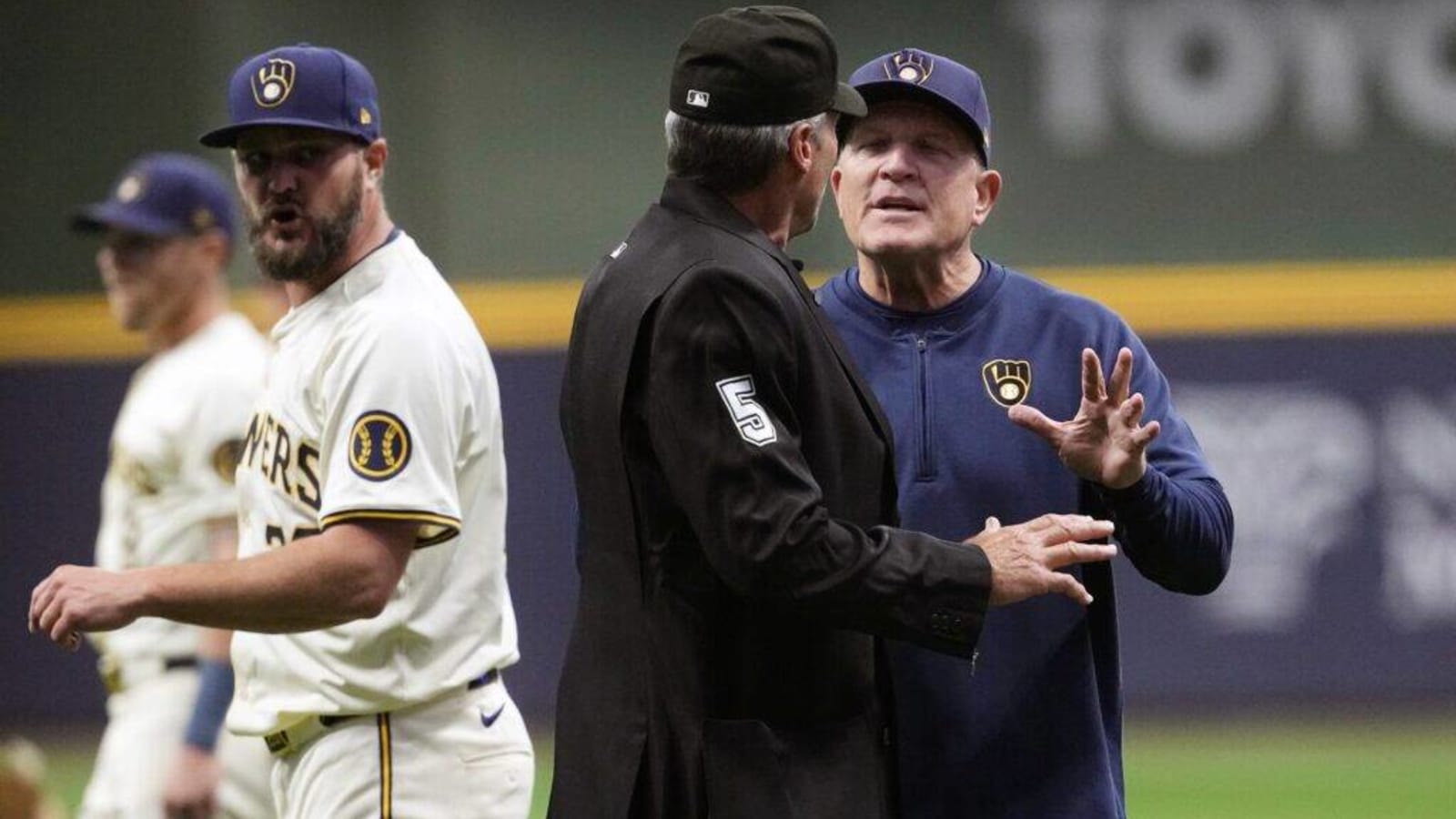
The days of strikes that are called balls and balls that are called strikes are numbered, because the automated strike zone is reportedly coming to MLB soon. For over three decades, Ángel Hernández has terrorized Major League Baseball anytime he steps behind home plate. His persistent inability to consistently and accurately call balls and strikes defies all reason. Outside of suing MLB for racial discrimination, the fact that Hernández has managed to retain his job is inexplicable.
While Hernández has become the poster child for bad calls, he is certainly not alone. Strike zone enforcement is a growing problem in the majors that needs to be fixed before more catchers get hurt. Cardinals catcher Willson Contreras broke his left forearm when he was hit by a swing earlier this month. Contreras will miss six to eight weeks after undergoing surgery to repair the fractured arm he suffered in a freak accident from catcher interference.
The automated strike zone is coming to MLB in the next two years, per @BNightengale pic.twitter.com/cVGeJsj7UL
— Michael Schwab (@michaelschwab13) May 13, 2024
With the automated strike zone expected within the next two years, per Bob Nightengale of USA Today, the days of bad calls and catcher interference are numbered. Catcher interference calls are on the rise as more catchers are setting up closer to the plate to steal strikes. Major league catchers set a new MLB single-season record with 96 catcher interference calls last season.
“It’s risky,’’ Tigers manager A.J. Hinch, a former catcher, told reporters. “The closer we can get to the plate, the more strikes we can grab at the bottom rail. Catchers are being evaluated and getting paid on how well they can control the bottom rail, and it’s led to more and more catcher’s interference calls.”
MLB Is Two Years Away from Implementing Automated Strike Zone
The automated ball-strike (ABS) challenge system is currently being tested in the minor leagues. It could debut in MLB as early as next season. Two versions of robo-umpiring are being used in all Triple-A ballparks this season, a full ABS and a challenge system.
Each ballpark is outfitted with an array of Hawk-Eye cameras and a computer determines whether a pitch is a ball or a strike. The ABS then relays the call to the home plate umpire via an earpiece. Both versions of robo-umpiring are being tested in each series this year. Full ABS is being used for the first three games of each series while the challenge system is being used for the final three games.
With the challenge system, the home plate umpire calls balls and strikes while ABS tracks each pitch. Teams have a set number of challenges that they can use if they believe the umpire got the call wrong. If the call is overturned, they get that challenge back. If the call is upheld, they lose the challenge.
While umpires can still affect games with their inaccuracies, their impact will be minimized when it comes to critical, game-changing decisions and player safety.
More must-reads:
- Yankees' Aaron Judge, Juan Soto make MLB history with impressive offensive numbers
- Diamondbacks ace heading to injured list with hamstring strain
- The 'MLB stolen base leaders' quiz
Breaking News
Customize Your Newsletter
 +
+
Get the latest news and rumors, customized to your favorite sports and teams. Emailed daily. Always free!

